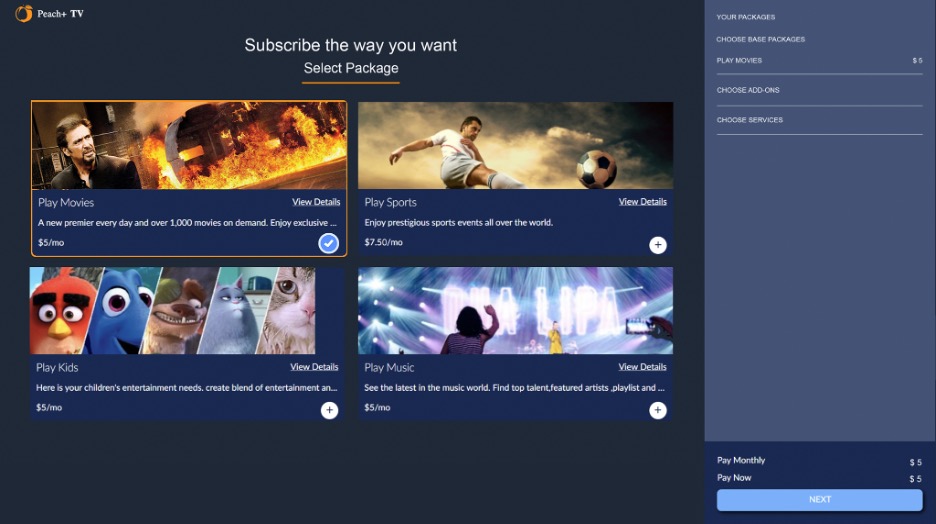Salesforce, AWS Partner on Streaming Solution for Content Distributors
The new offering is designed to help companies easily deploy, scale and personalize high-quality video streaming subscriptions

SAN FRANCISCO & SEATTLE—Salesforce and Amazon Web Services (AWS) have announced an offering that combines high quality video streaming technology with unique viewer data and feedback analysis tools to help content distributors deliver more scalable, personalized viewer experiences.
“Attracting and retaining a diverse audience while delivering consistent, high-quality video is one of the key challenges content distributors face today,” said Christopher Dean, vice president and general manager of Media & Entertainment & Media Cloud at Salesforce. “The Salesforce and AWS relationship brings together a comprehensive, industry-specific media offering designed for direct-to-consumer video and live streaming services. This allows content distributors to enhance their capabilities while also helping them rapidly launch new service offerings, such as subscription packages and product bundles. Together, we’re providing a customizable set of scalable and easy-to-deploy content tools and AI-driven subscriber journeys to further help studios, streamers, publications, and other distributors quench consumers’ thirst for personalized content.”
Direct-to-consumer video subscription offering is powered by Salesforce Customer 360 and Media Cloud subscriber lifecycle management capabilities, and AWS’ media, data, analytics, AI and machine learning capabilities. The combined technologies streamline how the subscriber journey is managed from registration to new service features; provides content monetization, payments, and entitlements; supports the delivery of more dynamic, targeted ads; and improves customer interactions and campaigns to reduce customer churn, the companies said.
Key benefits to content distributors include:
- More Integrated, Personalized Experiences: Content distributors can personalize viewer experiences while driving new subscriber acquisition, generating incremental revenues while increasing customer loyalty, retention and support. For example, a subscription streaming service can recommend upcoming pay-per-view content, such as a professional car racing championship special for a car-loving subscriber, while integrating new content delivery models — like live streaming — on top of existing subscription services.
- Increased Retention with Additional Insight into Viewer Intelligence: Content distributors can gain deeper insight into subscriber engagement with content such as clickstream actions or likes and dislikes on specific content recommendations served up to a subscriber. Access to these insights help personalize marketing campaigns to the customer, ultimately helping to convert them to longer-term subscribers. For example, if a fitness video service notices that a subscriber’s engagement is beginning to fade, it can offer classes from that subscriber’s favorite instructor to initiate new engagement.
- Configurable Platform to Easily Support Commerce-Driven Experiences: Content distributors can easily customize the experience, such as introducing and scaling content-driven commerce experiences and targeted ad placements. For example, a brand can do product placement in a video stream, enabling the viewer to purchase that product at the same time they’re watching a video.
"As development continues, Salesforce will continue to work with AWS and inspire the industry to consider deeper integration between the subscriber lifecycle and D2C video delivery, identifying and engaging audiences to make monetization simpler and more cost effective,” said Dean.
The companies noted that Salesforce and AWS technologies are already helping drive innovation and transformation at some of the world’s most recognized brands – including NBC Universal – to increase customer loyalty and engagement and reduce D2C streaming service ownership costs.
For more information about Salesforce end-to-end subscriber lifecycle management solution is available here.
The professional video industry's #1 source for news, trends and product and tech information. Sign up below.
George Winslow is the senior content producer for TV Tech. He has written about the television, media and technology industries for nearly 30 years for such publications as Broadcasting & Cable, Multichannel News and TV Tech. Over the years, he has edited a number of magazines, including Multichannel News International and World Screen, and moderated panels at such major industry events as NAB and MIP TV. He has published two books and dozens of encyclopedia articles on such subjects as the media, New York City history and economics.

